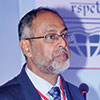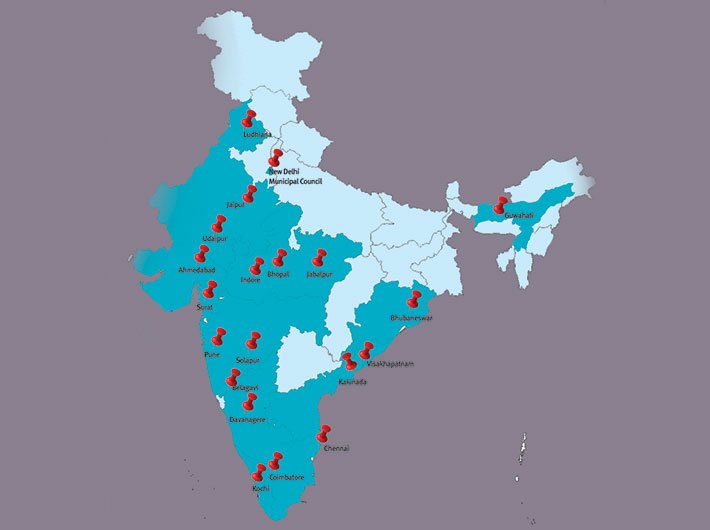From energy management to waste disposal, here are a few ingredients of a model city
The debate on what indeed is a ‘smart city’ continues to reverberate even almost a year after the mission on smart cities was launched in June 2015. Environmentalists keep insisting on clean and green dimensions as the key themes for smart cities, while sociologists talk of social equity, architects of signature structures, technologists of ICT as the main driver and town & country planners define smart city in terms of integrated and sustainable land use planning. These concerns are all very genuine and appropriate. However, the role of technology in making cities smart is, in many ways, overarching, in as much as technology can facilitate every aspect of the city, be it environmental, social, or managerial.
Efficient energy management
The smart built spaces are also expected to be net zero consumers of energy. This is possible to be achieved, at least in the larger structures, by generating energy within the buildings and also by reducing the levels of energy consumption. Generation of energy is mainly possible with solar energy converted into electricity and for direct heating of water and living spaces. The electricity so generated could either be used to light up the same building or could be fed into the grid, as suitable in each case. Switch over to LED illumination with intelligent controls for lighting and allowing sunlight and natural breeze to come in the required quantities and places can substantially reduce the energy consumption for lighting and cooling in the building. A smart city should be able to motivate occupant of every built structure to harness solar energy.
Disaster safety
As the built structures are getting taller, the issues relating to fire and other disaster safety are assuming greater magnitude. No longer can the ladders be used to evacuate people trapped in an emergency of these categories from, say, 40th floor of a high-rise building. The first and foremost requirement in the current scenario of skyscrapers is to make the design of such buildings safe from disasters. Additionally, once the fire alarm rings, the sprinklers installed can be activated through intelligent controls, while the control room and the inhabitants of the high-rise complex can communicate with each other through voice as well as images. Computer-aided designing and intelligent management of alarm and regulation facilities can provide considerable relief and succour to the occupants.
Waste management
Smart built spaces can be defined as those that can recycle and convert the waste, including sewage and solid waste, into useful products leading to net zero waste contribution to the environment. A large building such as an apartment complex, hotel, hospital, office complex, etc. could generate anywhere between 200 kg and 500 kg of solid waste and 50-100 kilolitres of sewage per day. Technological developments have made it possible to set up both solid waste and sewage processing units within or in close vicinity of such buildings, to convert the solid waste into manure and sewage into water fit enough for non-potable uses. Thus, a smart building would not transfer its waste to any place away from itself.
Transport management
Cities need to prepare mobility plans for moving people rather than vehicle based on the concept of ‘walk to work’. Mobility plans have to provide for multi-modal transport solutions like safe walkways, cycle paths, public parking and integrated junctions in a way that provides a safe and efficient mobility to people without using their personal cars. Geoportals such as the Bhuvan promoted by the ministry of urban development and the National Remote Sensing Centre, Hyderabad, along with associate institutions such as the Indian Institute of Remote Sensing, Dehradun, provide satellite imagery of the cities and their surroundings at nominal costs to the municipalities and panchayats. Such maps, with high resolution, are also available commercially and can help in preparation of city mobility plans with accuracy and speed.
Intelligent transport management systems based on video cameras installed unobtrusively at strategic locations can provide a singular framework of hardware for multiple services. For instance, regulation of traffic, by providing suitable diversions or shifting the road width temporarily on the side to heavier traffic, enhancing the frequency of buses, locating the broken down vehicles for evacuating from the busy streets and similar other uses. The same system can be used for various other services such as disaster management, crime investigation, search for missing persons and so on, with conjunctive use of the visual data collected through the chain of cameras and other devices.
Accessible structures & services
A smart city has to be, by basic principles, inclusive by making all infrastructure and services conveniently accessible to the elderly and physically disabled. Technology offers numerous solutions to achieve this objective, which need to be deployed with human ingenuity. While addition of ramps and convenient railings are normal features, use of ICT-enabled devices to open doors, view and talk to the visitors without opening the doors, accessing public spaces like parks, etc. and emergency public services like hospital and police services, can be a great boon to this group of citizenry in terms of security and comfort.
E-governance and m-governance
With life getting busier for every citizen, there is an increasing need to make government services available electronically. Many cities have already initiated efforts in this direction. Geospatial maps of the city, developed through aerial photography, coupled with on-ground verification, have proved to be a great success in boosting the revenues from property taxation in numerous cities across the country. This approach also reduces the scope of disputes and litigation related to properties as geospatial maps are far more objective and current.
Geospatial maps are also of immense utility in preparation of various layers of the master plan for land use of the city, such as the drainage plan, mobility plan, habitation plan and waste management plan. Satellite imagery provides an accurate picture of the natural drainage system as well as of obstructions due to construction activities. Overlaying the cadastral maps over the geospatial imagery of drainage network can pinpoint the exact parcels of land which needs to be handled to remove the obstruction of natural drainage system.
In sum
The potential benefits of e-governance have got accentuated in recent times owing to the integration of information technology (IT) with communication technology (CT), making information & communication technology (ICT) the current mode of e-governance through mobile telephony. E-governance is rapidly transforming into m-governance, with newer features coming up in the market incessantly. As every citizen possesses a mobile phone, m-governance makes the public information and services accessible to one and all, including the socially, physically and economically weaker sections of society.
Dr Krishna is chairman, BIS Committee on Smart City Standards, and former secretary, urban development, GoI.



